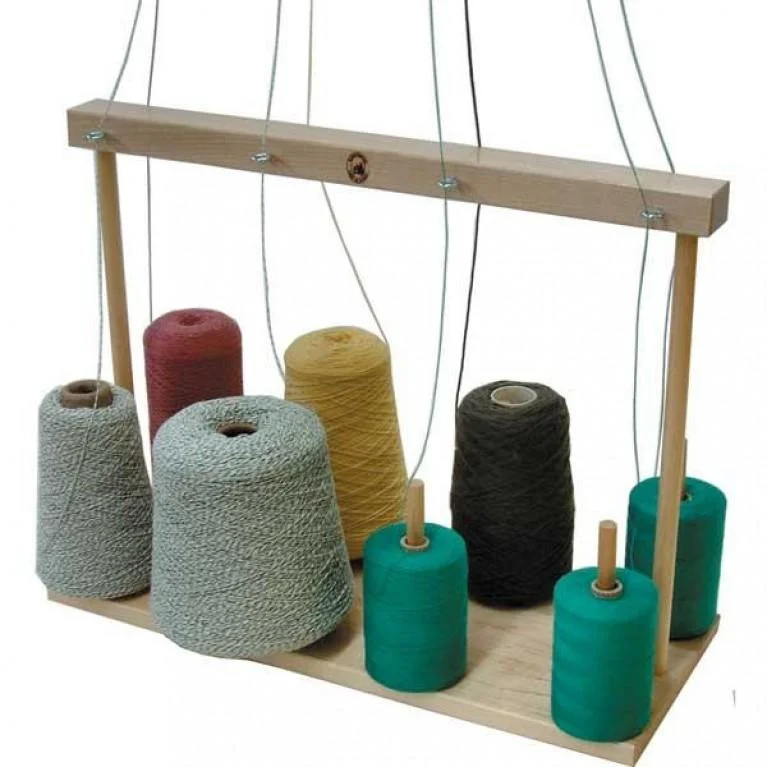How to feed your yarnUpdated 4 years ago
In order to properly tuft, a “yarn feeder” is essential to feeding your tufting machine.
Yarn feeders generally rest off to the side of your tufting frame, often as an addition to the frame itself. A wooden dowel keeps your yarn cone stable, while a screw eye placed near the top of the frame keeps yarn from snagging or tangling as it enters the machine’s needle.
Yarn that comes on cones is easiest to tuft with since it sits right on the dowel. Alternatively, yarn that comes as skeins or hanks can be wound into cakes with a yarn ball winder, then placed on an empty cardboard yarn cone or directly on the dowel.


Once your cone is secured on the dowel and your yarn fed through the screw eye, you’re ready to thread your machine and tuft. We recommend leaving enough slack between the machine and the yarn that the thread is loose, but not so loose that it will become tangled as you work.
Lots of tufters have come up with interesting ways to creatively feed their yarn; if you’re interested in engineering your own yarn feeder or trying out a new method, you might try connecting with other tufters through Tuft the World’s Mighty Network, where fiber artists from around the world ask questions and share helpful tips on everything tufting-related.